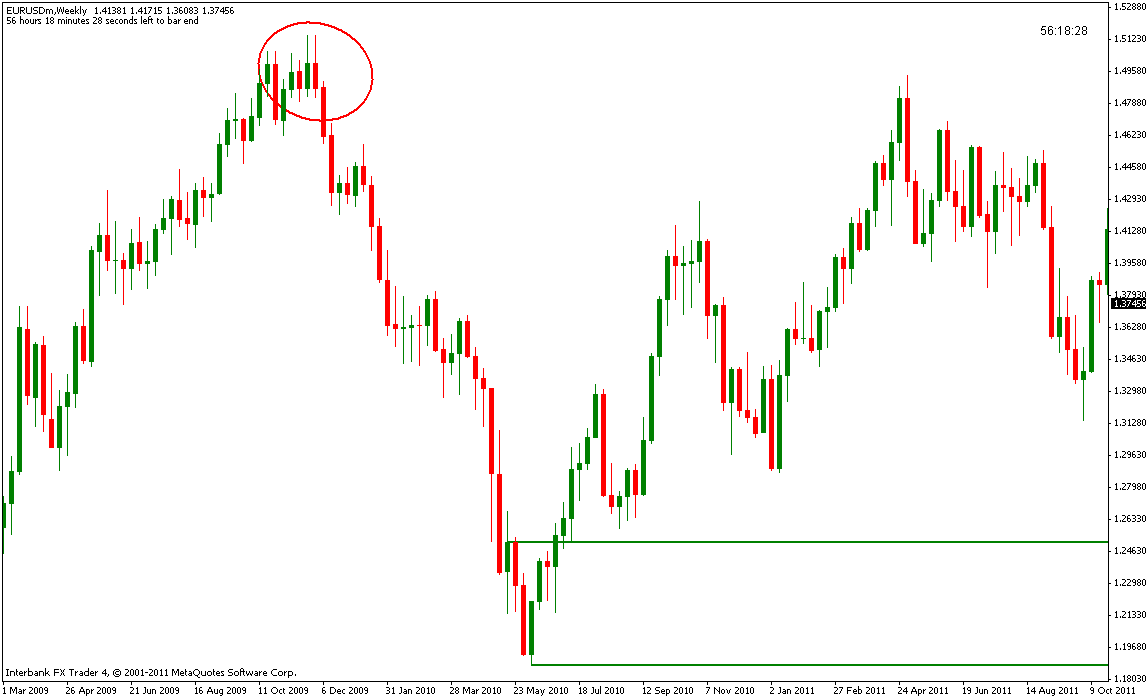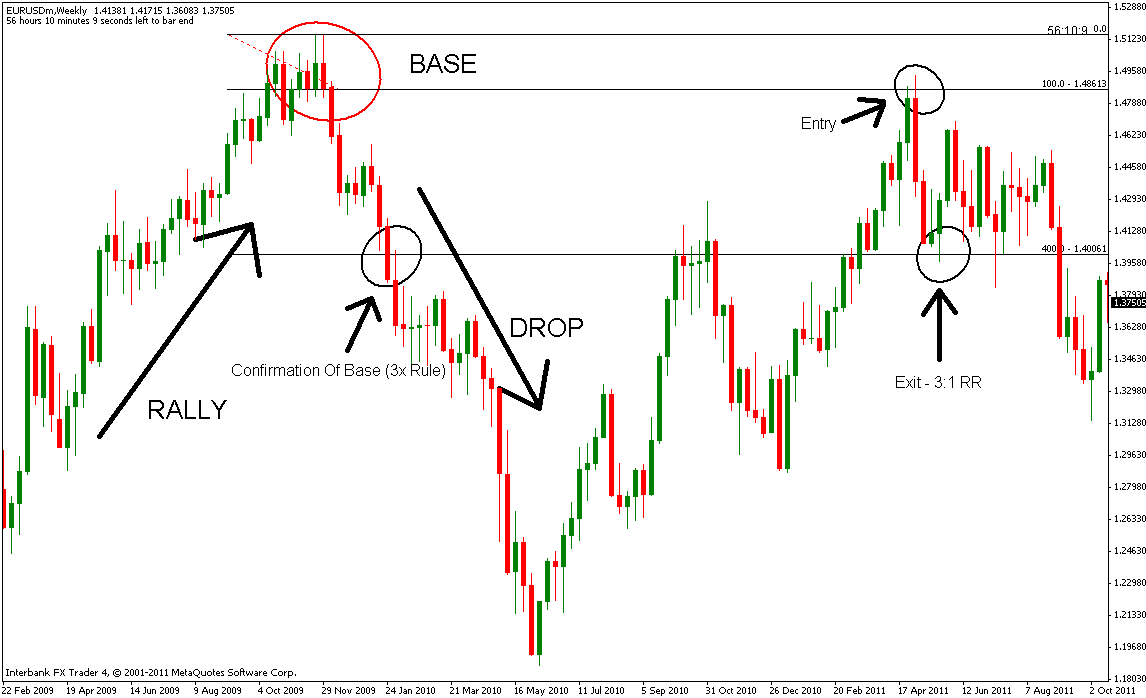If you missed Part 1, don’t worry, Part 2 is way better.
The 4 Types of Supply & Demand Levels
1. Drop Base Rally.
Pretty self explanatory, sort of. Let’s have a look at a DBR.
The above chart is a 30 minute chart. If you’re a short term trader this is for you. Mid to long term traders, or those seeking higher probability trades should work off of weekly charts. The premise is exactly the same however. There is one key aspect to finding a quality level, how price moved away from the level. The stronger the surge, bull or bear, the better the level. The rule is, price should move away from a level at least 3 times the amount of the level itself.
In the next chart I use the fib tool as a lazy man’s way to judge a level. The fib levles are 0.0, 100.0, and 400.0. Have a look and then i’ll explain the meaning behind it.
With the Fib tool in place, drawn at the same places as the green lines, you can see that price has risen over 3 times the size of the level itself. Reaching and extending beyond our minimum 3x rule (400.0 fib level). You do not have or need to use the Fib tool to do this, but for a beginner it helps with the visualization. After you get the hang of it, you’ll eyeball it like I do.
In order to do all of this correctly, you need to draw the level correctly. In general, you want to look for price spikes like the examples above, the level itself is an area of consolidation. But, the key part here is candle bodies. Look for 2 or more matching candle bodies and draw your line on those candle bodies. Look again at the example above. The top line of the demand level is drawn right on 2 matching candle bodies. The bottom of the level is simply the lowest point of the swing. I should note that the 2 matching candle body rule is my own rule, adapted to fit the Spot FX market. Any other market and the rules change slightly, but that’s a topic for another time.
2. Rally Base Drop
A rally base drop is simply the opposite of a drop base rally. Have a look at the base of this rally base drop (circled in red).
Now let’s take a look at our RBD with the Fib tool implemented.
And finally, let’s look at the “traditional” entry point and the exit point. Personally, I have different criteria for entry and exit, but that will be discussed in a later post on the subject.
In part 3, we’ll go over the two remaining patterns…
If you enjoy the content at iBankCoin, please follow us on Twitter






